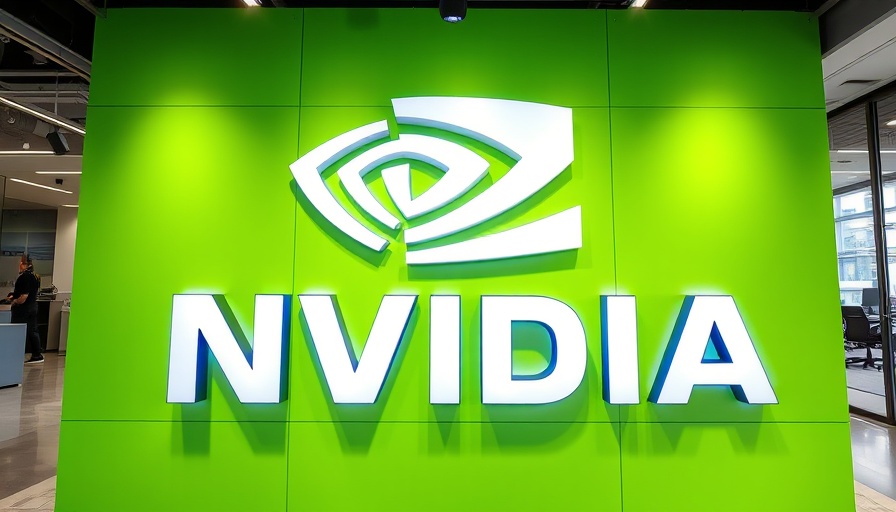
The Surge of Nvidia: Driving AI Innovation Forward
Nvidia (NVDA) continues to capture the attention of investors and analysts alike, especially as it's recognized for its critical role in the rapidly expanding artificial intelligence (AI) landscape. Recently, the technology giant was upgraded to 'Buy' from 'Hold' by HSBC, with a new price target soaring to $320—a striking increase from its previous target of $200. This upgrade is grounded in the forecast of "continuous earnings growth" fueled by an ever-increasing market for AI chips.
The AI Market's Expanding Landscape
Analysts like Frank Lee from HSBC highlight the evolving demand for Nvidia's GPUs not only from major tech players like Amazon and Microsoft but also from emerging AI-focused projects including OpenAI and CoreWeave. The anticipated growth of markets tied to collaborative projects with AI organizations is estimated to generate a staggering $400 billion in revenue over the coming years. Investors are keenly focused on how these dynamics will position Nvidia to continue leading the charge in AI hardware supply.
Understanding the Market Dynamics
There are benefits to keeping a pulse on the trends surrounding Nvidia's stock performance. The potential for Nvidia’s success hinges on both its technological advancements and its strategic partnerships within the AI ecosystem, including its collaborations with OpenAI. These relationships are crucial as they signal both opportunities and risks, particularly as the AI industry is fraught with rapid changes and competition from local entities in other markets such as China.
Current Events Fueling Insights
The recent news of large-scale AI infrastructure deals involving Nvidia also indicate an exciting future. The Artificial Intelligence Infrastructure Partnership aims to enhance capabilities through strategic investment—in this case, acquiring Aligned Data Centers for about $40 billion. This kind of activity reinforces Nvidia’s status as a linchpin in AI infrastructure, poised to support the surging demand for advanced computational power.
Concerns Amidst Growth: Can OpenAI Deliver?
Despite the positives, the market also reflects a level of skepticism regarding OpenAI’s ability to fulfill its commitments. As forecasts suggest that OpenAI's infrastructure spending could reach an impressive $1.3 trillion by 2030, many investors question whether revenue saturation will occur. Analysts worry about Nvidia's dependency on OpenAI for further growth, mindful of previous platforms’ fluctuations.
Looking Ahead: Predictions for Nvidia's Future
Given the sustained interest in AI and Nvidia's current trajectory, predictions point towards substantial growth and transformation within the tech giant. If Nvidia can effectively capitalize on its robust pipeline and maintain its competitive edge, it might see a year where earnings meet or exceed projected figures. The anticipated rise in AI chip production aligns with forecasts suggesting that Nvidia could reach 700,000 wafers produced by 2027—a clear indicator of its commitment to meeting increasing demand.
Conclusion: The Case for Nvidia's Continued Success
As Nvidia stands at the forefront of AI innovation, investors are advised to stay informed and consider the implications of the company’s rising stock amidst an evolving market landscape. A strong outlook bolstered by strategic partnerships within the AI ecosystem could solidify Nvidia’s place as a mainstay in technological advancements. To stay ahead, those interested in the future of AI technology should evaluate their investment options carefully and remain engaged with ongoing developments surrounding Nvidia and its competitors.
 Add Row
Add Row  Add
Add 




Write A Comment